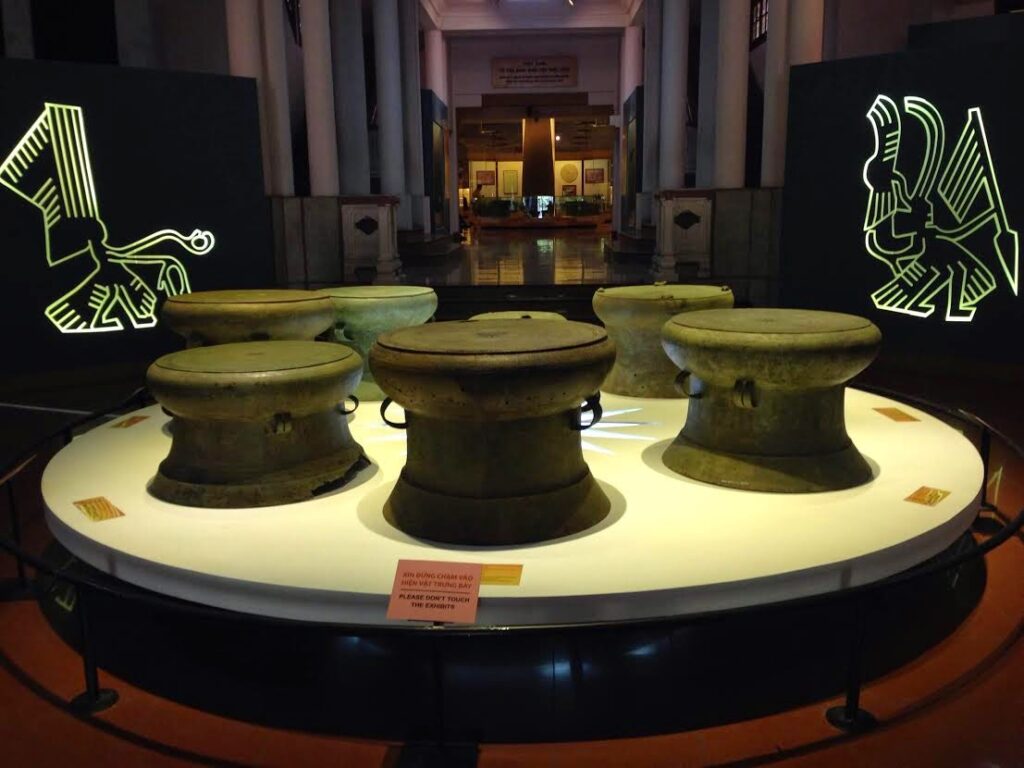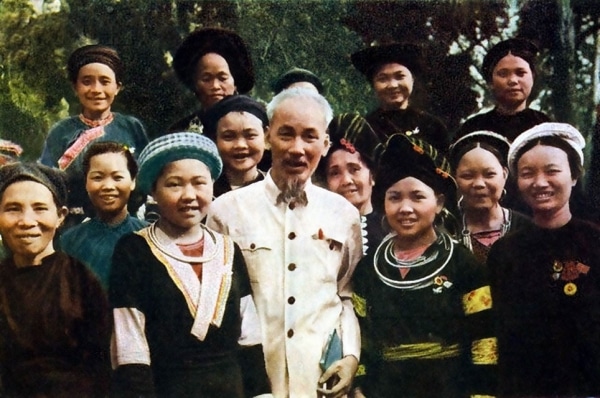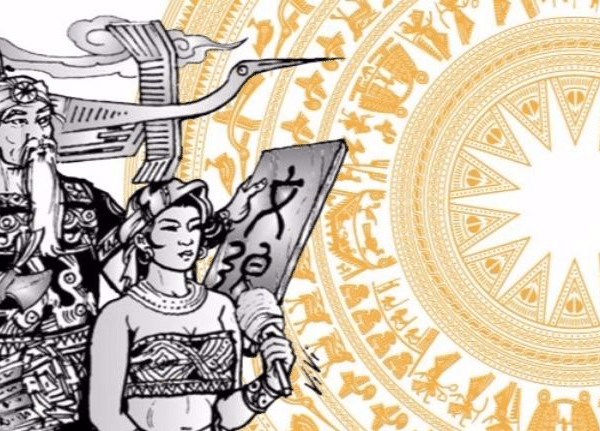A quick overview of the full history of Vietnam, from antiquity to the present day. Generations of emperors, rebels, priests, and colonizers left …
A brief history of Vietnam
Recent archeology has proven human existence on the territory of Vietnam since the Old Stone Age (300,000-5,500 years ago). In the Neolithic period, Hoa Binh – Bac Son cultures (nearly 10,000 years BC) demonstrated the emergence of agriculture and husbandry, possibly the art of wet rice cultivation.
The Vietnamese people were formed and initially developed in the Red River and Ma River deltas of northern Vietnam today. People from the hills and mountains to the plains, from generation to generation, have reclaimed land for farming and created a system of dykes to tame the Red River that previously caused many annual floods.
The process of non-stop labor to tame water – to fight floods, storms, droughts, build dykes, and dig canals for rice cultivation – created wet rice civilization and village culture.
In the Bronze Age, a unified and unique civilization reached a high level of technology and art – a brilliant Dong Son civilization. Recent anthropological, historical, and archaeological studies have confirmed the existence of a period of Hung Kings around 1,000 years BC on the Kingdom of Van Lang, then renamed Au Lac.
By the second century BC, Âu Lạc was invaded and merged into the mighty feudal Han empire in the North. But the ten-century domination of feudal China did not break the resistance of the nation and could not assimilate Vietnamese culture.
In the tenth century AD, the country gained solid independence and built an independent state named Dai Viet. The country has gone through many dynasties of feudal kings, the most important of which are the Ly (11th and XII centuries), Tran (XIII and XIV), Le (XV, XVI and XVII); with a centralized administration, a strong military force, a highly developed economy and culture.
During this period, Vietnam had to constantly fight against the invasions of the Chinese and Mongolian feudal empires. The long and arduous resistance wars against the Song invaders (11th century), Nguyen (XIII century), and Minh (15th century) won great victories.
After each resistance war, Vietnam became stronger, its peoples became more united and the country entered a new prosperous period.
The Dong Son culture was complemented by the influence of Chinese culture that developed over the centuries as an independent state.

Buddhism, Confucianism entered Dai Viet with many popular cultural elements and special forms. However, Vietnam still has its own language and a highly developed agricultural civilization.
By the seventeenth and eighteenth centuries, the feudalism of Vietnam was seriously weakened. Continued peasant revolts led to the Tay Son movement (1771-1802).
Tay Son destroyed the imperial regimes that occupied each region, unified the country, chased away the Qing invaders (China), and enacted many social and cultural reforms.
But not long after that, with foreign help, Nguyen Anh gained dominance and founded the Nguyen dynasty, the last feudal dynasty in Vietnam.
In the middle of the nineteenth century (1858), the French colonialists began their invasion of Vietnam. The helpless Nguyen court gradually conceded the invaders and from 1884, the French established a protectorate and colonized the entire territory of Vietnam.
From the very beginning, mass resistance movements led by patriotic scholars erupted everywhere, but in the end, all failed.
Revolutionary Nguyen Ai Quoc (then became President Ho Chi Minh) worked abroad to find a way to save the country. He founded the Communist Party of Vietnam on February 3, 1930.

Under the leadership of the Communist Party, the masses of people stood up to fight against the French colonialists and Japanese occupiers carried out the General Uprising in August 1945 and established the Democratic Republic of Vietnam on 2/ 9/1945.
The newly born Vietnam had to deal with invasions and interventions by France and the United States, and had to wage a war of national liberation that lasted for 30 years.
First of all, the return of French aggression caused a 9-year resistance war (1945-1954) of Vietnam, which ended with the victory of Dien Bien Phu and the Geneva Agreement on Vietnam in 1954.
According to this Agreement, The country was temporarily divided into two territories, the North and the South, taking the 17th parallel as the boundary line, and was reunified two years later (1956) through a general election.
Northern Vietnam during this period was named the Democratic Republic of Vietnam, under the leadership of the Labor Party with the capital Hanoi. The South was named the Republic of Vietnam under the control of the pro-French government, then the pro-American government in Saigon.
The Saigon government used all its power to stop the general election, suppress and eliminate the old resistance, so there was a movement to fight for peace and unification.
The Saigon government was unable to prevent the public’s aspirations to unify the country, especially since the establishment of the National Front for the Liberation of South Vietnam, on December 20, 1960.
To maintain the Saigon regime, the US increased its military aid. Especially since the mid-1960s, the US sent half a million American and allied troops to South Vietnam to directly participate in the war, and from 5/8/1964 started bombing North Vietnam.
But the Vietnamese people, according to President Ho Chi Minh’s teaching “Nothing is more valuable than independence and freedom”, stood firm and won many victories in both the South and the North.
In 1973, Washington was forced to sign the Paris Peace Accords in Vietnam and withdraw all US troops from Vietnam. In the spring of 1975, in the spirit of great national solidarity and the consent of the people who love peace, justice, and progress in the world, the armed forces of Vietnam made total progress to liberate the South, unify the country.
On July 2, 1976, the Democratic Republic of Vietnam was renamed to the Socialist Republic of Vietnam with territory including both the South and the North.
In 1977, Vietnam became a member of the United Nations.
After years of protracted war, the country was devastated. From 1975 to 1986, Vietnam had to deal with countless difficulties. Social consequences and evils caused by war, influx of refugees, war on the southwest border against the Red Khme genocide, war on the northern border, encirclement, embargo of the US and other countries in the West, in addition to continuous natural disasters … have put Vietnam in the face of extreme challenges.
Moreover, these difficulties are exacerbated due to subjective reasons, haste, and willpower to quickly rebuild the country without taking into account specific conditions. In the early 1980s, the socio-economic crisis in Vietnam became severe, the inflation rate reached 774.7% in 1986.
Since 1986, Vietnam has started to carry out a comprehensive reform to overcome difficulties, enter the path of development and gradually integrate into the region and the world.
At the 6th Congress, the Communist Party of Vietnam in December 1986 strictly reviewed its leadership, affirmed all aspects of its work, analyzed the mistakes and flaws, and proposed a comprehensive innovation approach in it.
Economic innovation is at the forefront with the policy of developing a multi-sector commodity economy operating under the state-controlled market mechanism, in line with socialist orientation, along with strengthening the base legally, reforming the organization of the Party and State.
Vietnam’s economy really opened up, shifting from a centralized bureaucratic subsidy mechanism based on imports and foreign aid to a market mechanism, financial autonomy to balance the state budget, and export-oriented.
Before 1989, every year Vietnam had to import food, with a year over 1 million tons. Since 1989, Vietnam has started to export 1-1.5 million tons of rice per year; inflation decreased gradually (by 1990 to 67.4%).
People’s lives have been improved, democracy in society is promoted. Defense and security are maintained. Foreign relations have been expanded, averting the situation of encirclement and isolation.
In June 1991, the 7th Congress of the Communist Party of Vietnam reaffirmed its determination to continue the renovation policy with the aim of overcoming difficulties, challenges, stabilizing and developing socio-economic, and political stability; repel negativity, ensure social justice, basically bring the country out of the crisis.
The Congress also proposed a foreign policy of independence, autonomy, openness, diversification, and multilateralization of the relationship with Vietnam’s goals “Want to be friends with all countries in the international community, strive for peace, independence and development. “
Although deeply affected by the dissolution of the Soviet Union and Eastern Europe, traditional markets have been turned upside down; Continuing to be surrounded by embargo and dealing with operational conspiracies that cause political instability and subversive riots of hostile forces, Vietnam has gradually overcome difficulties and obstacles, continues won many great victories.
From 1991-1995, the average annual growth rate of gross domestic product (GDP) reached 8.2%. By June 1996, foreign direct investment reached over 30.5 billion USD. Inflation fell from 67.1% (1991) to 12.7% (1995) and 4.5% (1996).
The material life of the majority of people has been improved. The people’s intellectual level and cultural enjoyment have been raised. The cause of education and training, health care, cultural and artistic activities, sports, mass media, family planning work, and many other social activities have aspects of development and progress.
Political stability, independence, sovereignty, and the peaceful environment of Vietnam have been maintained, national defense and security have been strengthened to create basic favorable conditions for the renovation.
The political system from the central to grassroots levels has been strengthened, the rule of law state apparatus has been continued to build and perfect. Vietnam’s foreign policy of independent autonomy, multilateralization, and diversification of relations has achieved good results.
For nearly a decade, implementing the socio-economic development strategy for the first 10 years of the 21st century, our economy has continuously grown and developed relatively comprehensively.
In the five years 2001-2005, the Gross Domestic Product (GDP) grew at an average rate of 7.5% and in the period 2005-2008, GDP grew by 7.84% on average.
Social and culture have improved on many fronts; the association of economic development with the settlement of social problems has had good chances, especially in the work of hunger eradication and poverty reduction; people’s living standards have been improved.
Politics – society is stable, national defense and security have been strengthened; Foreign relations have had a new development step. The construction of a socialist rule-of-law State has progressed in all three areas: The construction of a socialist rule of law State has progressed in all three areas: legislative, executive, and judicial. The strength of the bloc of great national unity was promoted.
For the past 64 years, since the victory of the August Revolution in 1945 and the establishment of the Democratic Republic of Vietnam, now the Socialist Republic of Vietnam, our country has gained many great achievements.
That was the victory of the glorious resistance war to liberate the nation, defend the Homeland, complete the people’s democratic revolution, unify the Homeland, and bring the whole country to socialism; The success of the innovation, set and led by the Party, has entered our country into a new period of development.
From the victories won in the twentieth century and especially since the birth of the Democratic Republic of Vietnam, our country has turned from a semi-feudal colonial country into an independent and free country. ; develop along the socialist path with the aim of building a Vietnam country “A rich people, a strong country, a fair, democratic and civilized society”. Vietnam currently has extensive international relations with an increasingly important position in the region and the world.
Currently, Vietnam has established more than 80 diplomatic missions abroad; has diplomatic relations with 176 countries, economic and trade relations with over 200 countries and territories, of which about 80 countries and territories invest directly in our country.
Above is a summary history of Vietnam that we have gathered to give you a more general overview of Vietnam full of heroic.

